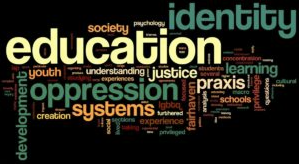Week 3
Visible/ Invisible Rules:
After reading about Marcus and his classroom, there are many examples of visible and invisible rules or codes of conduct in the classroom. The visible ones are used in order to set structure in the classroom as much as possible and make for every child to be able to learn in the given environment. The invisible rules are used in order to allow for the child to make some much needed decisions based upon how they are going to participate in their day within the classroom. These invisible rules are providing them with much support that they might not see or know they needed therefore why they are considered to be invisible. An example from the reading that contains both a visible and invisible rule to me would be when the class gathers at the rug in the mornings. The visible would be that they all know they must join on the rug, but the invisible would be where they have their choice of sitting on the rug a chair or standing.
In a Youth Space:
To me this connects largely to youth spaces, but more on the invisible level. Yes there are going to be some visible rules in order to protect those individuals in the space as well as the space, but when I think of a youth space I think of invisible rules. The individuals in the space know the expectations of the space, but they also are the ones that the space was created for. Therefore the space was put into place for them to feel comfortable, make decisions, and truly be the ones who determine the function of the space while always respecting the few visible rules put in place as a backbone.



Thanks for your post Abby! The last paragraph makes me wonder about youth involvement in shaping the rules of a space--whether students in Emily's class are involved and whether you have seen this type of work in action at youth spaces that you're familiar with?
ReplyDelete